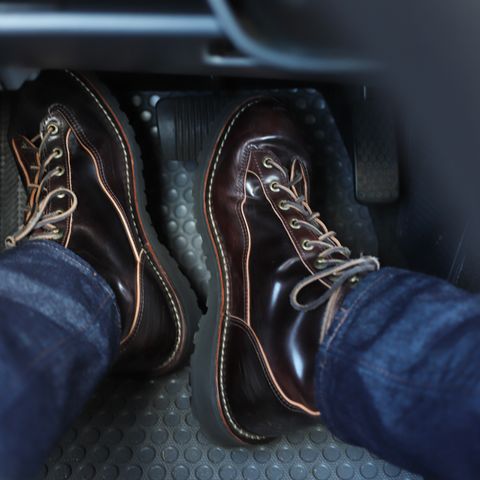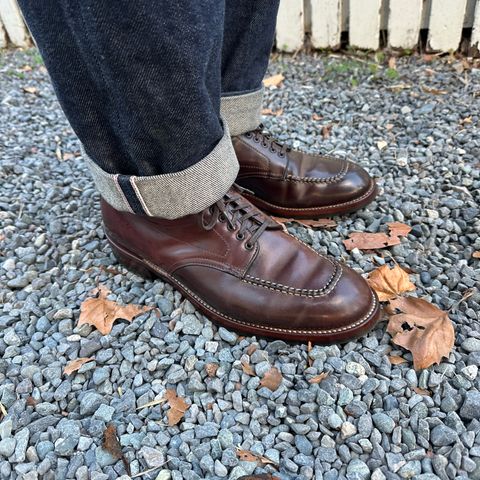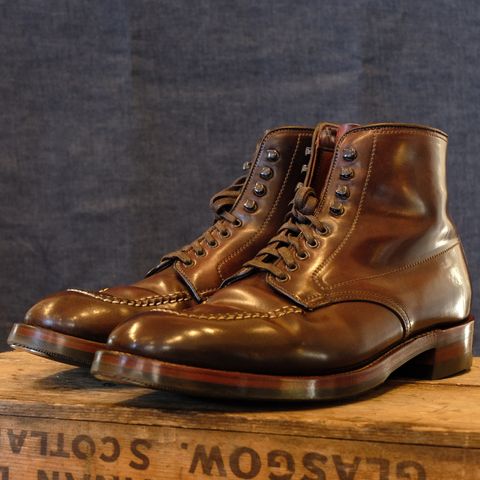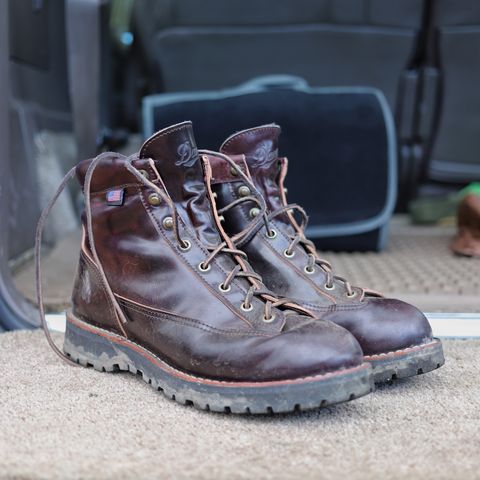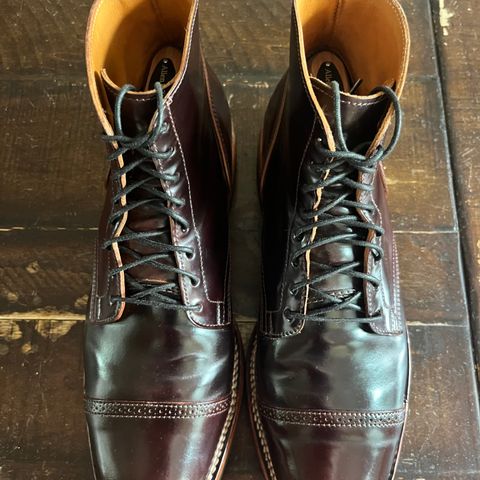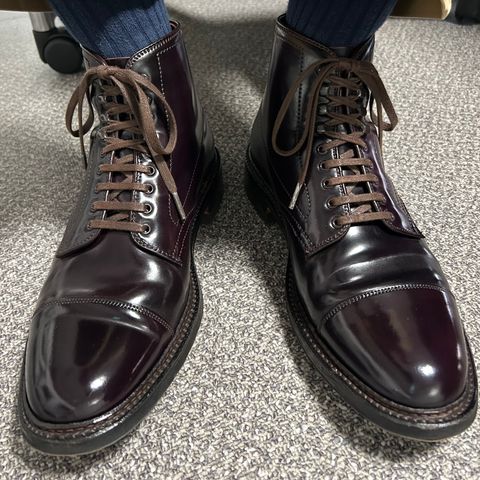About
Color 8 is a burgundy shade of shell cordovan leather produced by Horween Leather Company in Chicago. Distinguished by its deep burgundy-eggplant hue, Color 8 represents approximately 90% of Horween's shell cordovan production and has become closely associated with the leather itself. The name derives from the original dye supplier's labeling system, where the burgundy formulation was designated as "Color 8."
About
Color 8 is a burgundy shade of shell cordovan leather produced by Horween Leather Company in Chicago. Distinguished by its deep burgundy-eggplant hue, Color 8 represents approximately 90% of Horween's shell cordovan production and has become closely associated with the leather itself. The name derives from the original dye supplier's labeling system, where the burgundy formulation was designated as "Color 8."
This leather color has gained particular significance in heritage footwear, serving as the foundation for premium boots and shoes from makers worldwide. Color 8's popularity stems from its versatility, distinctive aging characteristics, and historical association with mid-century American style and Ivy League fashion.
Color characteristics
Color 8 shell cordovan presents as "a rich dark brown with burgundy/eggplant tones" that varies considerably depending on lighting conditions, ranging "from a light red-brown to a deep dark burgundy." The color's complex appearance results from Horween's proprietary dyeing process, where the burgundy formulation has evolved to become what many consider the classic cordovan color.
The leather's appearance differs from manufacturer to manufacturer based on additional finishing processes. Alden applies an extra layer of dye at their factory to create a more consistent, purplish burgundy color, while other manufacturers preserve more of the natural burgundy variation that characterizes the base Color 8 leather from Horween.
Color 8 has achieved official recognition as Pantone color 19-1726 TCX, cementing its status as a standardized color reference beyond leather applications.
History and development
The development of Color 8 represents a shift in shell cordovan production standards throughout the 20th century. Color #4 was actually the standard shell cordovan color for most of the century, with manufacturers like Florsheim using color #4 shell cordovan from 1921 through the 1980s. Manufacturers would typically purchase color #4 shell and darken it to resemble what is now recognized as Color 8.
The color gained prominence in the early 1960s, becoming closely associated with mid-century American "preppy" style and Ivy League fashion. This period established Color 8's reputation as the quintessential cordovan color, leading to its current status where the color has become "closely associated -- even synonymous -- with the leather cordovan."
Today, Color 8 comprises approximately 90% of Horween's shell cordovan production alongside black, with the remaining 10% distributed among other specialty colors.
Production process
Color 8 shell cordovan follows Horween's traditional six-month production timeline. The shells undergo slow vegetable tanning in pits where each shell is steeped in gentle vegetable liquors for extended periods. Following the initial tanning, shells are hot stuffed and slicked onto glass frames to dry.
The distinctive Color 8 appearance results from aniline dyeing and hand glazing processes that achieve the leather's characteristic luster and feel. No acrylic finish or coating is applied, leaving the leather in what Horween describes as its "pure state." The leather is finished exclusively with natural creams and waxes applied through a hand-brushing process called "currying."
This traditional approach incorporates natural oils, waxes, and greases into the leather structure, contributing to Color 8's unique handling characteristics and aging properties.
Aging and patina
Color 8 shell cordovan develops distinctive patina characteristics that set it apart from other leather types. The color "has the potential to develop an extremely rich patina, with brighter, burnished tones of red" that emerge through regular use. With significant wear, the deeper burgundy gives way to much brighter red tones that can resemble other Horween color designations.
The leather's aging process involves color evolution where "burgundy often lightens slightly and grows redder" while maintaining the material's structural integrity. The unique fiber structure with tight natural grain reduces creasing through natural properties, allowing the patina development to occur evenly across the surface.
Color 8's aging characteristics make it particularly valued by heritage footwear enthusiasts who appreciate how the leather develops character over time while maintaining its fundamental durability and appearance.
Care and maintenance
Color 8 shell cordovan requires specialized maintenance approaches that differ from traditional leather care. Since the leather contains "greater amount of oils and natural waxes" compared to typical calfskin, most routine care involves only brushing or cloth wiping to remove dust and buff out scuffs.
The leather rarely requires traditional polishing, needing only "a thin film of high quality polish" when necessary. Specialized products like Saphir's Burgundy Cordovan Shoe Cream, which contains beeswax, high concentration of pigments, and neatsfoot oil, help maintain the leather's suppleness and crease resistance.
For restoration needs, the leather can be conditioned using traditional methods such as deer bone application, which moisturizes the leather with natural fats. This approach aligns with Color 8's natural composition and traditional finishing methods.
References
"Service Boot® 2030 - Colour 8 Shell Cordovan". Viberg. Retrieved September 5, 2025.
"The Full Works: Burgundy Shell Cordovan". Crockett & Jones. Retrieved September 5, 2025.
"Horween color #8 Shell Cordovan Jumper Boot". Meermin Shoes. Retrieved September 5, 2025.
"Color 8 Cordovan: Classic Leather, Classic Color - Part 1". Ashland Leather. Retrieved September 5, 2025.
